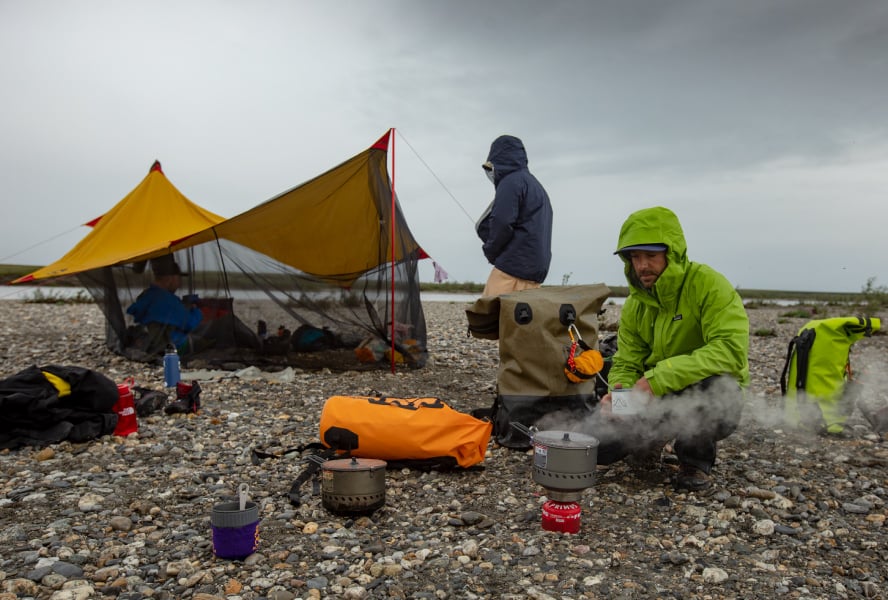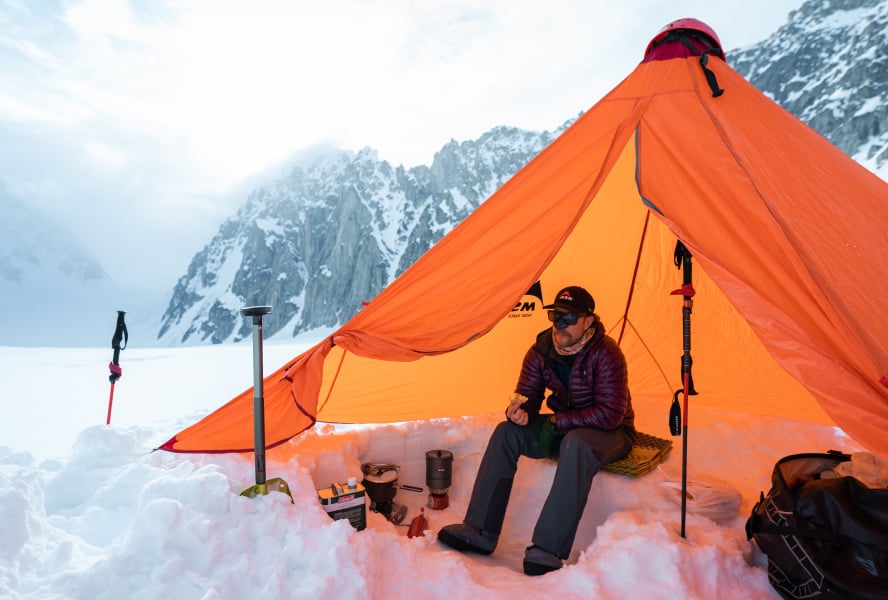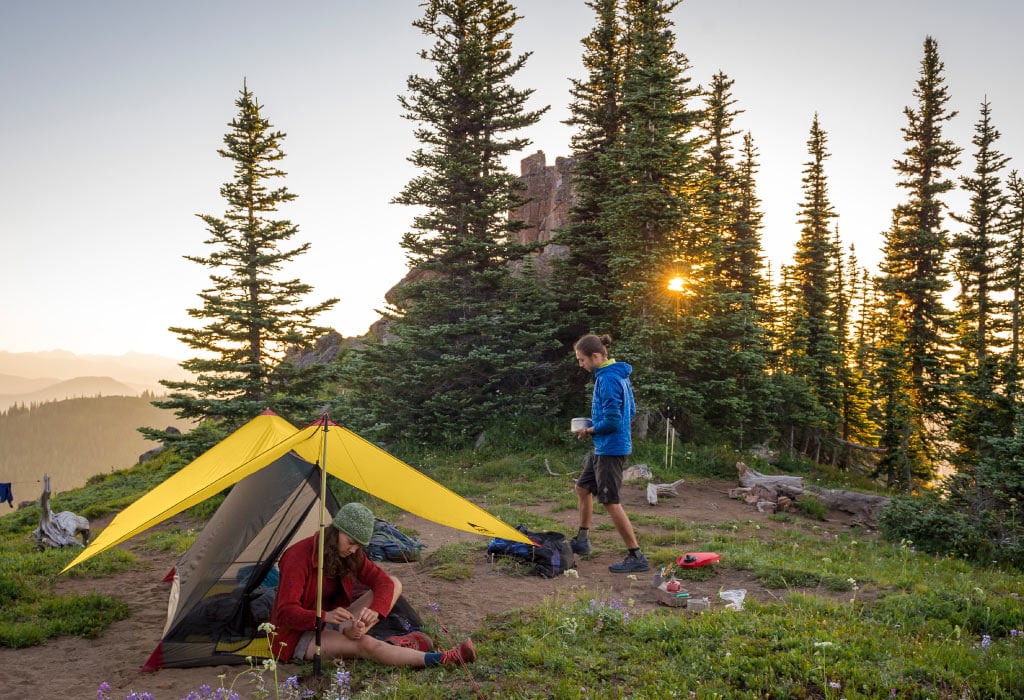Tent? No Thanks. I Prefer Tarps.
I’m no expert in shelter design. But I do have personal experience and probably a fairly unique opinion on what makes the perfect outdoor home. Tent? No thanks—too confining, too hot in the summer, too hard to get in and out of, not enough fresh air and usually no view. I like tarps.
Why Choose Tarps?
In my experience, they don’t tend to build up condensation like tents. You can tie them to trees (no poles needed) and set them up in many ways depending on the situation. In fact, they’re easy and fun to set up. My advice: Don’t be afraid of tarps. I almost always use a tarp and I’ve only woken up wet twice. Once because of limited site selection in very heavy rain (small stream going through the shelter). Another time we tried using a ground cloth and it ended up sticking out from the perimeter of the tarp—funneling water inside. I only recall a couple of bad bug situations that I wish I had some sort of mesh insert. Here’s a closer look at MSR’s tarps and shelters:

The MSR Rendezvous Sun Shield
The MSR Rendezvous™ Sun Shield is my favorite for most trips–usually remote car camping/basecamp-style camping. It’s big (17’ 7” x 16’ 6”), yielding 200 sq ft of protection (and you can walk under it). This is key for hanging out and drinking beers or when it’s nasty out. When it’s sunny, it’s great shade. When it’s windy you can fasten one side down to the ground with the other side open and still feel like you’re outside. I lived under it for a whole summer at a pond by my house. One time we set it up vertically to block the wind from the firepit. One lesson learned: dead-man your stakes when in sand in windy conditions.

The Front Range Tarp Shelter
The Front Range is my lightweight favorite for backpacking or shelter. It’s super lightweight, can be used with trekking poles, and packs small. Depending on the weather you can fasten the edges to the ground (or snow) or set it up a little taller for better ventilation. I spent a week living under the Front Range along the Lost Coast in northern California. The temps were hot, there was hardly any shade—but I never woke up sweating or gasping for fresh air. Although I didn’t need it on the coast, you can also get the Bug Insert to give you protection from bugs or just the wet ground.

Thru-Hiker Wings
The Thu-Hiker Wings are a backpacking favorite of mine. They’re super lightweight, pack small and can be pitched with trekking poles, or even sticks in a pinch. They come in two sizes to match the Thru-Hiker Mesh Houses they’re engineered to cover, creating incredibly lightweight, full-protection shelters. However, you can use them on their own too. They weigh as little as 12 ounces, and both the 70 and 100-sized models offer good coverage for 2-3 people. My friend Brian (about 6 ½ foot tall) and I took one on a hike into the Hoh River rain forest on the Olympic Peninsula recently and it was so nice to wake up, looking over that beautiful river in the middle of the rain forest, without leaving my cozy bed.
About the Author – MSR Engineer Earl Sherrard
Earl once spent an entire summer living out of an MSR tarp by a pond near his house—just to live outside. He’s mastered the craft of margarita blending at the top of mountains and can build a fire in any weather, including in the snow at -14 F. In 1999, Earl joined MSR as a mechanical engineer for the Marathon Ceramics project. He’s hiked the 75-mile Stevens Pass to Snoqualmie Pass section of the PCT in Washington, and loves to deep-sea fish when he can.
Related Posts:
- The Art of the Bivy: When a Bivy Sack is Better Than a Tent
- Winter Shelters – Tips for Building the Ultimate Winter Shelter
- Go the Distance: Introducing the MSR Thru-Hiker Shelter System
Updated. Originally published May 6, 2015.
